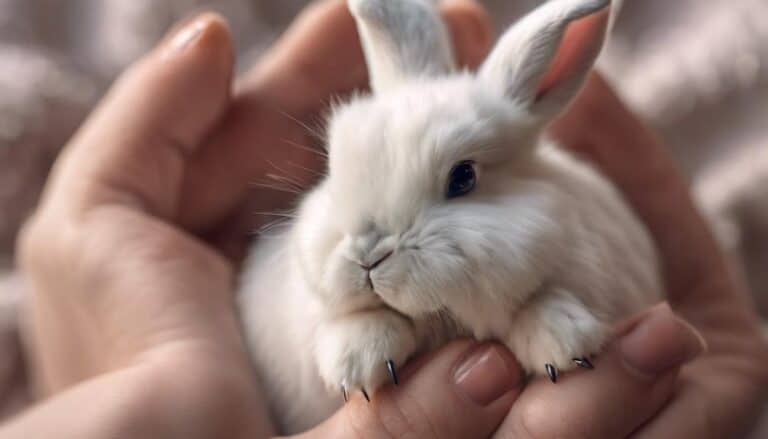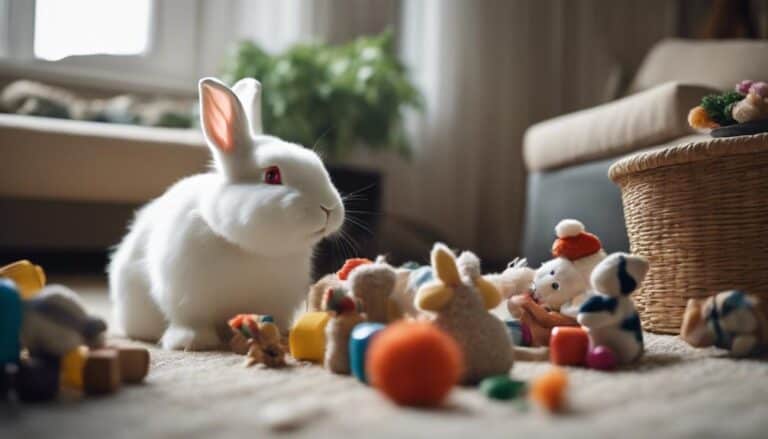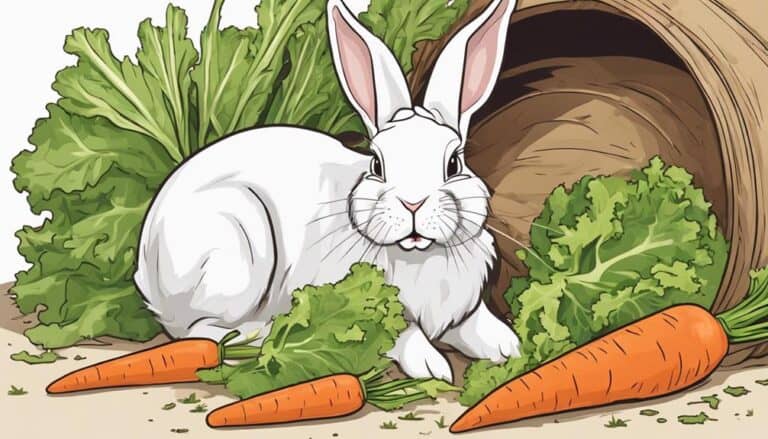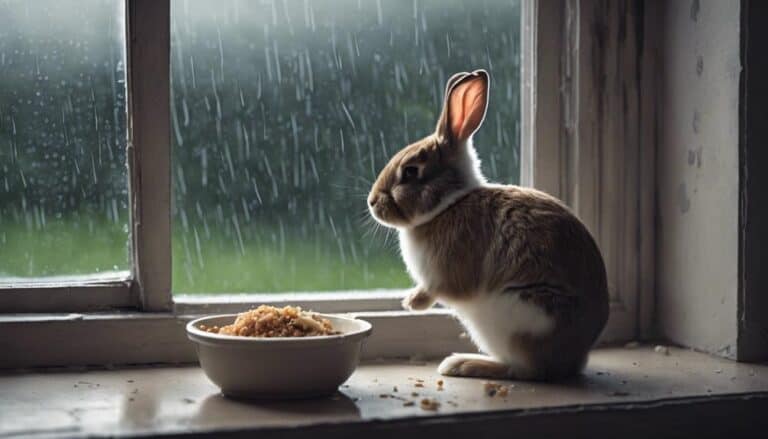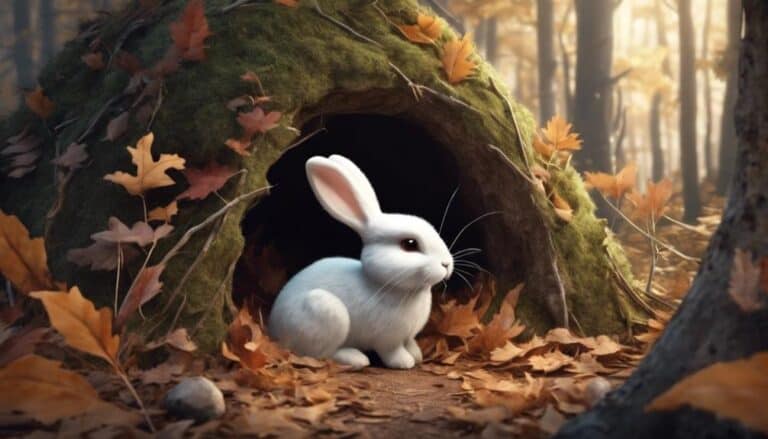You may find it surprising, but rabbits can indeed display homosexual behaviors.
The intricacies of same-sex pairings among these furry creatures raise intriguing questions about their social dynamics and relationships.
Understanding the complexities of bunny bonding and non-reproductive interactions sheds light on the fascinating world of rabbit companionship.
While opposite-sex pairs may seem more natural, delving into the nuances of same-sex rabbit relationships can offer valuable insights into their behavior and well-being.
Contents
- 1 Key Takeaways
- 2 Homosexuality in Rabbit Companions
- 3 Same-Sex Pairing Dynamics
- 4 Bunny Bonding Behavior
- 5 Non-Reproductive Sexual Interactions
- 6 Mounting and Dominance Humping
- 7 Environmental Factors and Rabbit Behavior
- 8 Can Secondhand Smoke Affect the Sexual Orientation of Rabbits?
- 9 Frequently Asked Questions
- 10 Conclusion
Key Takeaways
- Same-sex pairings in rabbits can face challenges related to territorial instincts and aggression.
- Territorial instincts play a crucial role in determining compatibility and bonding success.
- Understanding social hierarchy and gradual introductions are essential for successful pair bonding.
- Patience, effort, and proper management are key to navigating complexities for well-being and happiness in same-sex rabbit pairs.
Homosexuality in Rabbit Companions
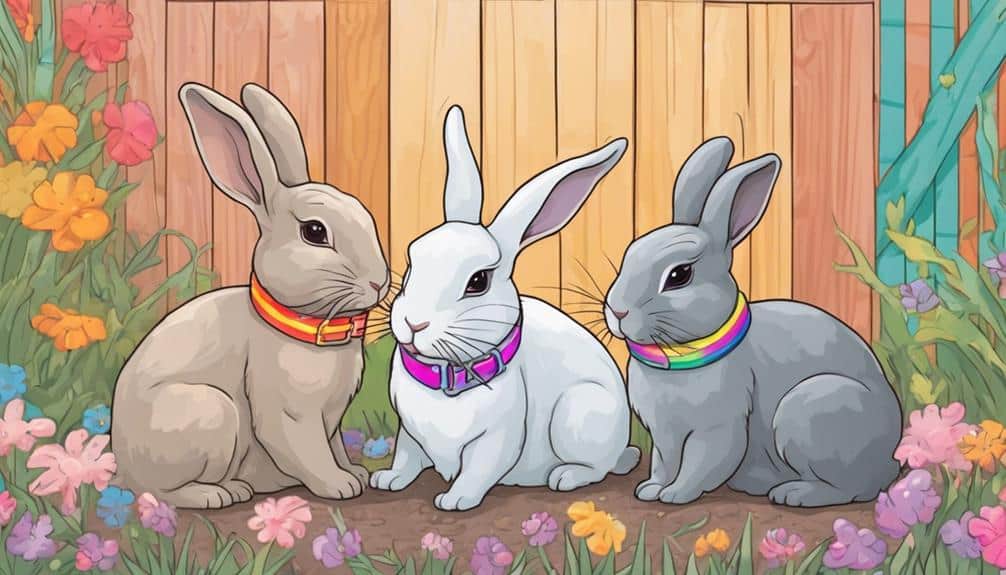
Homosexuality in rabbit companions can present challenges related to territorial instincts and aggression. When bonding rabbits, especially male rabbits, it's essential to take into account the potential for homosexual behavior.
Male rabbits, like many animals, can exhibit same-sex preferences, impacting the bonding process and overall compatibility with companions. Adopting same-gendered siblings may lead to increased aggression, particularly during puberty, as territorial instincts come into play. Understanding these dynamics is important for successfully managing same-sex pairings.
Patience, effort, and proper management are necessary to establish a harmonious bond between homosexual rabbit companions. By recognizing and addressing the challenges associated with same-sex pairings, caregivers can guarantee the well-being and happiness of their rabbit companions.
Through careful observation and proactive intervention, it's possible to navigate the complexities of homosexual behavior in rabbits and foster positive relationships between male companions.
Same-Sex Pairing Dynamics
When considering same-sex pairing dynamics in rabbits, territorial instincts play an important role in determining compatibility. Same-sex pairs may exhibit aggression towards each other due to instinctual behaviors, leading to potential instability and serious fights.
It's essential to understand that keeping two male rabbits together beyond puberty can escalate into violent confrontations, resulting in severe injuries. Desexing same-sex rabbits may not always guarantee stability in their relationship, as aggression can still persist due to their innate territorial nature.
In comparison, opposite-sex pairs are generally more stable and easier to bond than same-sex pairs. This highlights the challenges that come with forming and maintaining homosexual rabbit pairs, as their aggressive tendencies can hinder the bonding process.
Be prepared to approach same-sex pairings with caution and Be prepared to address any behavioral issues that may arise due to their territorial instincts and aggressive behaviors.
Bunny Bonding Behavior
When observing bunny bonding behavior, it's essential to contemplate:
- Pair bonding dynamics
- The establishment of social hierarchy
- Communication through grooming
Understanding these points can help facilitate a successful bond between rabbits and promote harmonious interactions.
Through proper techniques and gradual introductions, rabbits can develop strong connections leading to a peaceful companionship.
Pair Bonding Dynamics
In bunny bonding dynamics, gradual introductions and supervised meetings play an important role in ensuring peaceful coexistence and fostering harmonious relationships between rabbits. Neutering is vital to prevent aggressive behavior, facilitating a harmonious bond. Successful bonding leads to peaceful interactions, mutual grooming, and companionship. Patience and proper techniques are key for preventing conflicts and establishing a strong bond. Understanding bunny bonding behavior contributes to the well-being of bonded rabbits.
| Bunny Bonding Dynamics | Importance |
|---|---|
| Gradual Introductions | Ensures peaceful coexistence |
| Supervised Meetings | Fosters harmonious relationships |
| Neutering | Prevents aggressive behavior |
| Mutual Grooming | Result of successful bonding |
Social Hierarchy Establishment
As rabbits engage in bonding, the establishment of a social hierarchy becomes a foundational aspect of their interactions, guiding the roles of dominance and submission within the group. Understanding the dynamics of social hierarchy among male rabbits is important for their successful bonding and overall harmony.
Here are some key points to take into account:
- Social hierarchy is established to determine dominance and submission roles.
- This hierarchy is essential in preventing conflicts between rabbits during bonding.
- Behaviors like mounting, grooming, nudging, and circling are common in the hierarchy establishment.
- Dominant rabbits may exhibit assertive behaviors, while submissive rabbits display deference.
Communication Through Grooming
Engaging in grooming behavior, male rabbits communicate affection, strengthen social bonds, and establish hierarchy within their group. Grooming serves as an essential aspect of social bonding among rabbits, fostering trust, comfort, and a sense of belonging within the community. Through mutual grooming, rabbits convey acceptance and care towards one another, contributing to the cohesion of the group.
Additionally, grooming behavior can reflect the hierarchy within the rabbit community, with dominant rabbits often receiving more grooming from subordinates. Establishing a grooming routine is particularly beneficial for bonded rabbit pairs, enhancing their bond and overall well-being. Grooming plays a significant role in the social dynamics and relationships among male rabbits, promoting harmony and communication within their group.
Non-Reproductive Sexual Interactions
Non-reproductive sexual interactions in rabbits encompass a variety of behaviors. These include mounting, grooming, and genital stimulation. These behaviors serve purposes beyond reproduction. They include social interaction and dominance displays.
Understanding these interactions can shed light on same-sex bonding behaviors. It also helps in understanding social hierarchy dynamics in rabbit communities.
Same-Sex Bonding Behaviors
Rabbits demonstrate same-sex bonding behaviors through natural non-reproductive interactions such as mounting and grooming. This behavior is essential for male rabbits to establish and maintain their social bond with one another. Understanding these non-reproductive sexual behaviors is important for caretakers to support the well-being of their rabbits.
- Same-sex bonding behaviors in rabbits can involve genital stimulation and social interactions.
- Non-reproductive sexual interactions contribute to the social bond between same-sex rabbits.
- Mounting behavior in same-sex pairs can serve as a dominance display or a form of social interaction.
- Accepting and acknowledging these behaviors can help create a harmonious environment for same-sex rabbit pairs.
Social Hierarchy Dynamics
Social interactions among rabbits, including behaviors like mounting and grooming, play an important role in establishing and maintaining social hierarchy dynamics within the group. In male rabbits, non-reproductive behaviors such as mounting can serve as displays of dominance or ways to release tension and strengthen social bonds.
Grooming behaviors also contribute to the social structure by promoting cohesion and cooperation among group members. These non-reproductive sexual interactions are natural and common in rabbit social dynamics, helping to define relationships and establish order within the group.
Understanding the significance of these behaviors provides valuable insights into the complex social hierarchy dynamics of rabbits and the roles they play in maintaining cohesion and structure within their communities.
Mounting and Dominance Humping
In rabbit behavior, mounting and dominance humping serve as essential forms of communication within their social structure.
Mounting behavior in rabbits is a form of dominance humping, not necessarily indicative of sexual orientation. Dominance humping can occur between same-sex rabbits as a display of hierarchy or territorial behavior. Male rabbits may exhibit mounting behavior towards other males to establish dominance within their social group. Dominance humping can also be seen in female rabbits as a way to assert control or establish pecking order.
Understanding these behaviors is critical for interpreting rabbit interactions accurately. By recognizing that dominance humping is a common behavior among rabbits, regardless of gender, you can better understand their social dynamics and hierarchy.
Male rabbits, in particular, often engage in mounting as a means of establishing their rank within the group. This behavior helps maintain order and structure within the rabbit community, ensuring clear communication and social cohesion.
Environmental Factors and Rabbit Behavior
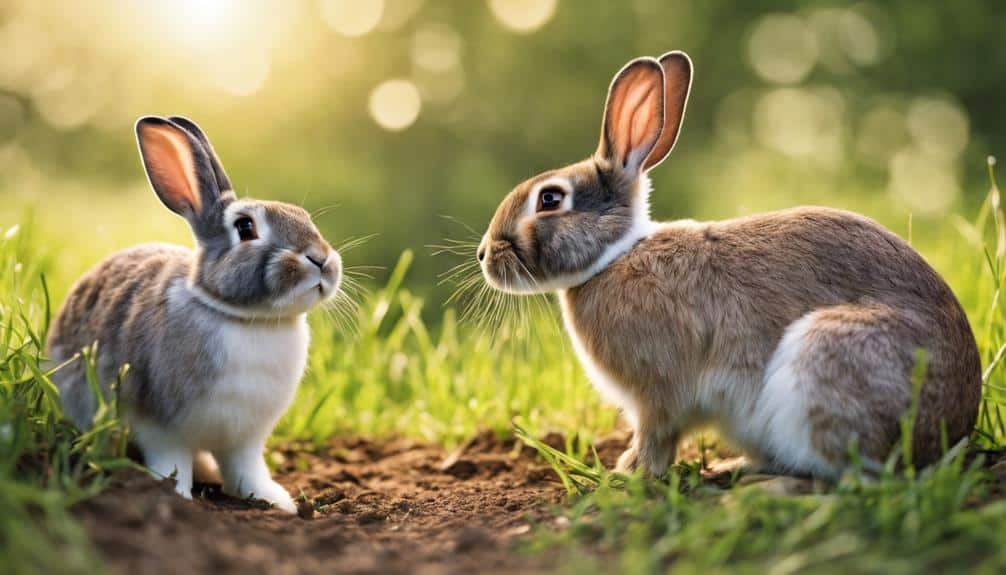
When considering rabbit behavior, the impact of environmental factors on their actions is an essential aspect to analyze. Male rabbits, in particular, exhibit territorial instincts that can be influenced by their surroundings. Changes in the environment, such as housing conditions or the introduction of new elements, may trigger aggressive behaviors in rabbits due to their territorial nature.
It's pivotal to understand that rabbits have good memories and may react aggressively if they've fought before in a particular environment. Proper management of the rabbit's environment is critical for maintaining behavioral harmony among male rabbits, especially when territorial instincts come into play.
Can Secondhand Smoke Affect the Sexual Orientation of Rabbits?
No, smoking around rabbits allowed. Secondhand smoke can harm their health, affecting their behavior and development. It’s important to keep rabbits in a smoke-free environment to ensure their well-being. Taking steps to minimize their exposure to secondhand smoke is vital for their overall health.
Frequently Asked Questions
Can Same Gender Rabbits Mate?
Same gender rabbits cannot mate due to lacking necessary reproductive organs. Their interactions are often related to dominance or social hierarchy, not sexual attraction. Behavioral observations show bonding behaviors and social dynamics drive their interactions.
Can Two Male Rabbits Be Together?
When two male rabbits are together, their natural instincts for dominance can lead to aggressive behavior, causing fights and potential injuries. Social interactions and bonding between same-sex pairs may not result in compatibility and stability.
What Animal Has the Highest Homosexuality Rate?
When considering animal behavior, it is fascinating to note the high rates of homosexuality in various species. Dolphins exhibit homosexuality for social bonding, penguins form enduring same-sex couples, and some insects show queer behavior.
Do Male Rabbits Mate?
Yes, male rabbits do mate. Their reproductive behaviors involve establishing dominance and territory. Mating rituals include mounting, chasing, and dominance displays. Courtship behaviors are influenced by social hierarchy and territorial disputes within a group.
Conclusion
To conclude, while same-sex pairings among rabbits may present challenges in bonding and aggression, understanding and addressing these complexities can lead to a harmonious relationship.
By providing proper care, guidance, and patience, pet owners can guarantee the well-being and happiness of their same-gender rabbit companions.
Recognizing the dynamics of bunny bonding behavior and non-reproductive sexual interactions is essential for fostering a stable and fulfilling relationship between same-sex rabbits in their shared environment.

